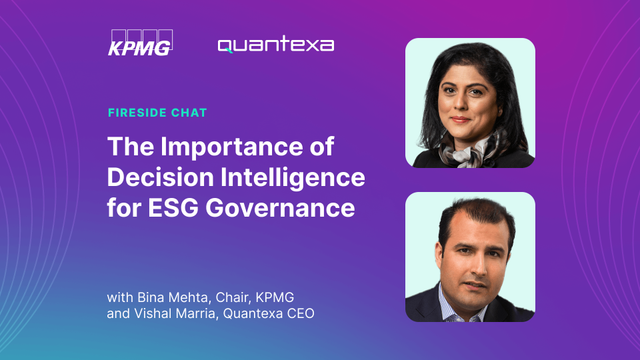Spotlight on Sanctions Risk: Why Speed and Context Are Key to Mitigating Impact
Explore how financial institutions’ risk and compliance teams can effectively identify and manage risk beyond sanctioned entities.
In response to Russia’s military invasion of Ukraine on February 24, 2022, governments worldwide have rapidly imposed sanctions on Russia and Belarus. The global coordination of sanctions has included the EU, the US, the UK, Canada, Switzerland, Japan, Australia, and Taiwan.
Current expansive and unprecedented actions have added to market volatility and the brittle environment in the face of rising interest rate concerns. Now, tightening sanctions are the more discernable pre-cursors to an array of more ambiguous second-order impacts. Supply chains are disrupted; energy and commodity prices are spiking; and the rapid rising of inflation is leading economists to forecast an increased risk of recession.
Sanctions and export controls have been broad to date, encompassing the energy sector, as well as targeting Russian banks, exports of high tech, assets and the issuance of Russian sovereign debt and equity. Enlarged sanctions could impact a wide range of commodities as Russia is a large exporter of metals and agricultural goods.
In this article, we explore how risk and compliance teams can effectively identify and manage risk beyond sanctioned entities considering the market environment.
Managing sanctions risk in a rapidly changing landscape
Managing sanctions risk is complex and presents myriad challenges. These include nuanced and evolving lists, jurisdictional considerations, and reputational concerns. Financial institutions may also be grappling with disparate and disconnected data sources, limiting their view of potential sanctions exposure. Perhaps the most obvious example of this challenge is with the U.S. Treasury’s Office of Foreign Assets Control’s (OFAC) 50% rule.
Simply put, the 50% rule imposes sanctions on companies with combined ownership by sanctioned parties of 50% or more. OFAC also recommends “caution” in dealing with companies in which sanctioned entities hold large stakes that are close to 50%. For example, some companies may be 49% owned by a sanctioned Russian company, technically just below that threshold.
Sanction teams need to look beyond the named sanctioned entity to better understand the related parties that may also fall under sanctions restrictions.
In this alert, the U.S. Department of the Treasury’s Financial Crimes Enforcement Network (FinCEN) outlined increased vigilance for potential sanctions evasion attempts and encouraged financial institutions “to consider how the use of innovative tools and solutions may assist in identifying hidden Russian and Belarusian assets.”
These unprecedented circumstances and the scale of sanctions have led to investigation teams being forced to work swiftly while under immense pressure. Many financial institutions are now seeking innovative approaches, dynamic systems, and rapid technology to help identify, assess, and embed the sanctions and associated risks into their current Financial Crime compliance environments.
This starts with a current and accurate watchlist and risk identification data to prevent any money laundering or sanction evasion efforts, combined with efficient and effective investigation and identification of connected parties, both as individuals and companies.
Technology is one of the most effective enablers that will allow teams to assess new sanctions, action investigations, and identify the future threats to better understand the context around sanctioned entities, and forge a fast and reliable path forward, providing greater efficiency and effectiveness, including:
Reduced time to review sanctioned people and entities
Faster diagnostics of material risks with better visualization that automatically builds out multi-hop connections and associations
Quicker ability to export data for aggregation and to support reporting obligations
Built in audit trail to support regulatory inquiries
More frequent and automated watchlist updates – with new sanctions being constantly introduced, this will help identify uncertainty and risks earlier.
Using flexible technology to understand holistic risk impacts
Since the outset of the crisis in Ukraine, banks have been grappling with the challenge of generating a holistic view of Russian risk and Ukraine exposures. Providing the C-suite with an early estimate of direct exposures is the easier component, with Credit Agricole and Raiffeisen already guiding a €6.7bn and €23bn risk exposure respectively according to Reuters. This is calculated via portfolios of customers or legal entities in the affected area – but is likely to be a gross underestimate. Economies and companies are highly interconnected, which means that calculating a true picture of risk requires an understanding of your borrower’s direct and indirect network.
Technology can assist by extending the risk monitoring horizon beyond a customer focus to their counterparties, via supply chains and social links. Payments and trade data, coupled with the identification of the counterparty, facilitate the construction of a multi-tier supply chain. Sanctions flags, family relationships, and company hierarchy data all enable social networks to be constructed. Exposure data, across all product types – retail, trade, loans, derivatives, and more – is then aggregated to build a holistic view of risk.
With this capability, financial institutions are already running rapid scenario analysis to score entire portfolios of corporate customers within hours, versus others who have redeployed analysts to manually focus on the most concentrated customers in the region. One European bank that leveraged the power of technology was able to find connections and risks 85% faster, covering 14x more customers compared to ten risk analysts doing it manually in the same one-week period.
Meanwhile, there could be positive (and negative) impact on other regions such as the UAE and its banks. This could lead to higher growth (primarily because of increased oil costs), more lending, a decline in provisions, provided the overall profitability of UAE banks. Should this be the case, banks will need to invest in more dynamic, better connected Anti-Money-Laundering (AML) technology with Russian re-direction of investment, a higher degree of monitoring, and early risk signals technology to ensure they remain positive.
The ESG risks: Reputational impact
FMCG, global service companies, and banks now see market presence in Russia as a reputational risk. Consequently, they have been rapidly divesting local business units or exiting relationships. Beyond the immediate restructuring and redundancy costs, for global groups this can mean a big hit to future revenues. For example, BP announced a charge of up to $25bn in exiting its 20% stake in Rosneft, a Russian oil company. Citigroup and JPMorgan, among others, are also declaring their institutions and active strategy to exit the market.
The reputational impact is not solely linked to Russia, but is also due to the risk of human error, given:
Information is changing in a highly dynamic and complex environment. New sanctions and watchlists are being posted daily. Company announcements, profit warnings and news are at an all-time high. Not all blocked entities are directly listed on watchlists as institutions are expected to identify related parties that exceed the 50% ownership threshold. Contextual information is needed to reduce false positives and understand how impacts are linked.
The world is still recovering from an extended period of disruption due to Covid-19, which reinforced just how connected companies and economies are. Compounding this with the risks of a global recession, soaring inflation and commodity prices, coupled with the politicization of supply chains, increases complexity.
Manual processes rapidly become redundant as volatility and complexity increases. This was seen last year when one bank spent around five weeks combining a holistic view of market and credit risk exposure to the Archegos family office client, by which time the position estimates were redundant and materially under-reported.
Financial Institution employees are already near burn-out having supported their existing clients with government Covid-19 schemes – in some cases writing seven years of loans in the space of a few months. They are now tasked with interpreting and assessing a new complex and changing scenario.
Ongoing disruption and impact to the global supply chain
The effects of the increasing international sanctions on Russian companies and their associated individuals are further destabilizing what is an already weakened global supply chain. This will highly likely lead to further reductions in energy supply, potentially some food supply, and the metal supplies required to build key technologies.
The ongoing volatility around supply chain risks has already led financial institutions to review and re-assess exposures and loans to the manufacturing and automotive industry. It is now under further threat and scrutiny with companies declaring a delay in production, a slow output of chip manufacturing due to dependencies from Ukraine, and delays to the transportation of goods, among others.
As a result of these challenges, institutions are seeking to increase scenario and behavior linked analysis to understand activity beyond the borrower. Unlocking a holistic picture of a firm’s second, third, and fourth-order impact and supply connections with dynamic, innovative, and connected data technology can provide a full and instantaneous picture of risk.
Building a new kind of risk resilience
While regulatory impacts started with sanctions, which required banks to maintain strict controls to avoid AML fines, this has rapidly evolved into a much more complex and multifaceted risk scenario, due to the assets of individuals, companies, and countries associated with the Russian state.
When it comes to assessing rapidly emerging patterns of sanctions risk, the need for greater levels of agility and accuracy has never been more important. The key is to mobilize technology and people to ensure situational awareness and resiliency.
This intelligent approach, which involves people, processes, and technology working together to provide the C-suite with the key data points, is crucial for accurate and timely operational decision-making.
Financial institutions and businesses are looking to:
Reassess credit policies, rebalance risk and risk appetite (holistic risk management) within portfolios
Understand what sanctions could be coming, portfolio impact, Financial Crime control enhancement
Understand the impact of this on the supply chain, the level of dependencies of all suppliers to Russia and Ukraine (direct and indirect)
Conduct scenario analysis for portfolio diversification and explore alternative suppliers to reduce supply chain impact.
The Ukraine crisis has put sanctions risk in the spotlight. Now, it is the duty of the entire industry ecosystem to work together and respond. The challenges that come with managing such a rapidly changing environment, where new sanctions are being introduced daily, can be mitigated by looking at risk holistically. Connected data and relationship network analytics to explore wider relationships are key in helping banks detect, assess, and manage risk more effectively – which has made the importance of risk intelligence expertise and flexible technology greater than ever.

 Loading
Loading
